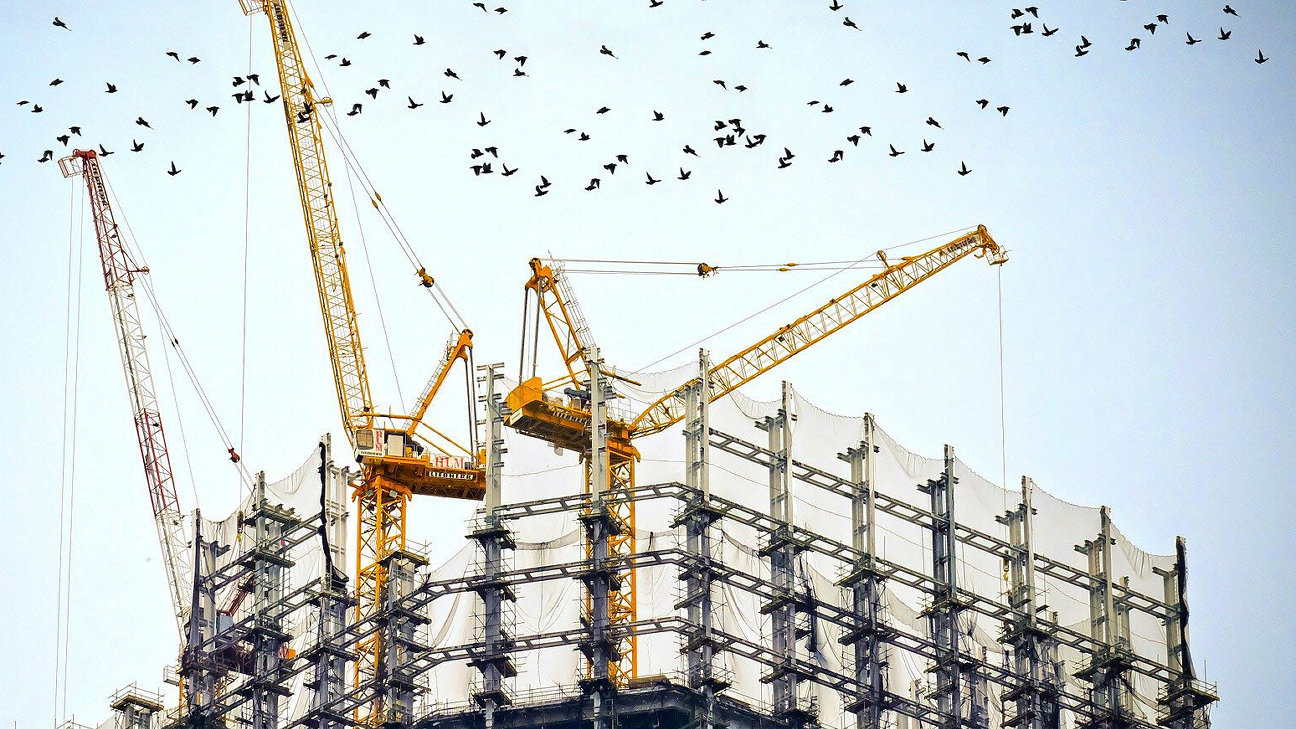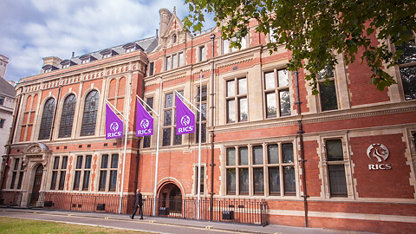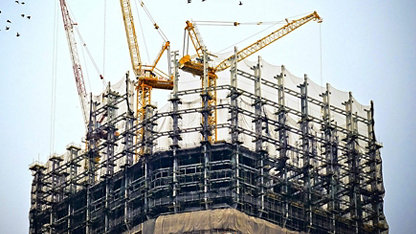Key takeaways:
- Workload activity deteriorated across global regions in Q1 2020
- Impact varies depending on severity and timing of pandemic, and government measures
- Costs rising faster than tender prices, suggesting further financial pressures ahead
- More resilient outlook for infrastructure as part of fiscal stimulus for recovery
Construction activity has been hit hard by the impact of COVID-19, according our latest International Construction and Infrastructure Surveys.
Across all regions surveyed, construction and infrastructure professionals reported a marked downturn in workloads and activity in the first quarter of 2020. The severity of slowdown, however, appeared to depend on the timing and severity of the outbreak, and when lockdowns took effect.
Asia Pacific sees slowdown set in first
In Asia Pacific, not only has the outbreak stopped construction activity in several economies, it has also led to difficulties in sourcing labour and materials for construction. With the exception of the Philippines, respondents in all countries surveyed reported a contraction in activity. Although negative, headline readings in Japan and India are slightly more robust; the Indian government didn’t announce its lockdown until near the end of the quarter, and measures adopted in Japan appear to be much less restrictive than elsewhere. By contrast, China saw the sharpest contraction in workloads after being shut down for most of the quarter.
Momentum halts in North America and the UK
In the UK, the headline workloads indicator slipped into negative territory for the first time in almost eight years (-3% compared +12% in Q4 2019). However, sentiment weakened towards the end of the quarter, following stricter lockdown measures enacted by the government. Responses after 27th March signalled a sharp downturn in workloads, with a net balance of -21% of respondents reporting a decline.
A similar downturn was apparent in the US in Q1. Having increased firmly during the final quarter of 2019, total workloads fell in Q1, with the net balance deteriorating from +45% to -12%. In Canada, the same measure was negative across all sectors, whether residential, commercial or infrastructure. Here, insufficient demand has replaced skills shortages as the key obstacle to activity.
Middle East contends with dual impact of pandemic and falling oil prices
Throughout the Middle East and Africa, economic headwinds mounted over the quarter with varying severity; no country was shielded completely from the global decline in trade, asset prices and mobility. The impact was amplified in the Middle East following the collapse of oil prices, and uncertainties around a deal with OPEC. Saudi Arabia, however, was the only MEA country to report an increase in headline construction market activity, potentially following the economic diversification program, or the country having fewer issues with oversupply.
Cost pressures mount for construction firms
Firms’ finances are naturally under greater pressure as a result. Financial constraints are highlighted as the biggest challenge to activity in the Middle East, and a key concern in Asia. Given the economic backdrop, this is likely to intensify. In the US, a net balance of -30% of respondents expect profit margins to be further squeezed, and in the UK, 43% more surveyors anticipate margins fall than rise. Indeed, across multiple global markets, construction costs are likely to rise faster than tender prices. In Asia Pacific, tender prices for building and civil engineering projects are forecast to rise 1.2% and 2.6% respectively; total construction costs are forecast to rise 2.3%. In the Middle East and Africa, building tender prices are predicted to rise 1.7%, with construction costs rising by 2.4%.
A gloomier outlook for the sector…
Overall, the outlook for construction and infrastructure has deteriorated sharply. In the US, expectations for the next twelve months were downgraded across all categories compared to Q4, and for non-infrastructure workloads, they have turned completely flat (compared to a reading of +63% in Q4). In the UK, workload expectations dropped to -13% in Q1 from a net balance of +50% in Q4. An increasingly downbeat outlook appears to be the norm for much of the Middle East and some parts of Africa too.
China, however, bucks the trend. Despite an extremely severe contraction in the first quarter, respondents also expect an extremely strong rebound over the next 12 months, based on the belief that the government will announce new fiscal stimulus measures, such as infrastructure investment.
“It is clear that professionals expect governments to boost infrastructure spending on the road to economic recovery. This will provide a ray of light amid the gloomier outlook for the sector, perhaps pointing to a way out of the current downturn. ”
…but infrastructure resilience points to shape of recovery
In fact, across all regions, infrastructure activity has broadly held up better in the face of the impact of COVID-19, or respondents expect this sector to perform strongest in the year ahead. In the UK, for instance, contributors reported a modest rise in infrastructure activity (net balance of +11%) in Q1, and 36% more contributors anticipate infrastructure workloads to rise rather than fall in the coming year. In Asia Pacific, 60% of countries surveyed expect infrastructure workloads to grow in the next 12 months. In the US, although the net balance of respondents expecting an increase in workloads fell, it remained positive (+5%).
Sean Ellison, Senior Economist, RICS, commented: “The performance of the sector has been entirely dominated by the impact of COVID-19. Firms have been placed under increasing financial stress as social measures to tackle the virus became stricter, sites have closed, and the seismic shock to the global economy has become starker.
“Despite a huge array of government fiscal interventions, the recovery process is likely to prove protracted, and it certainly won’t be uniform. Construction sites may be starting to re-open in some countries, but this will be on a country-by-country basis, and we do not yet know the full impact on demand.
“Nonetheless, it is clear that professionals expect governments to boost infrastructure spending on the road to economic recovery. This will provide a ray of light amid the gloomier outlook for the sector, perhaps pointing to a way out of the current downturn.”














